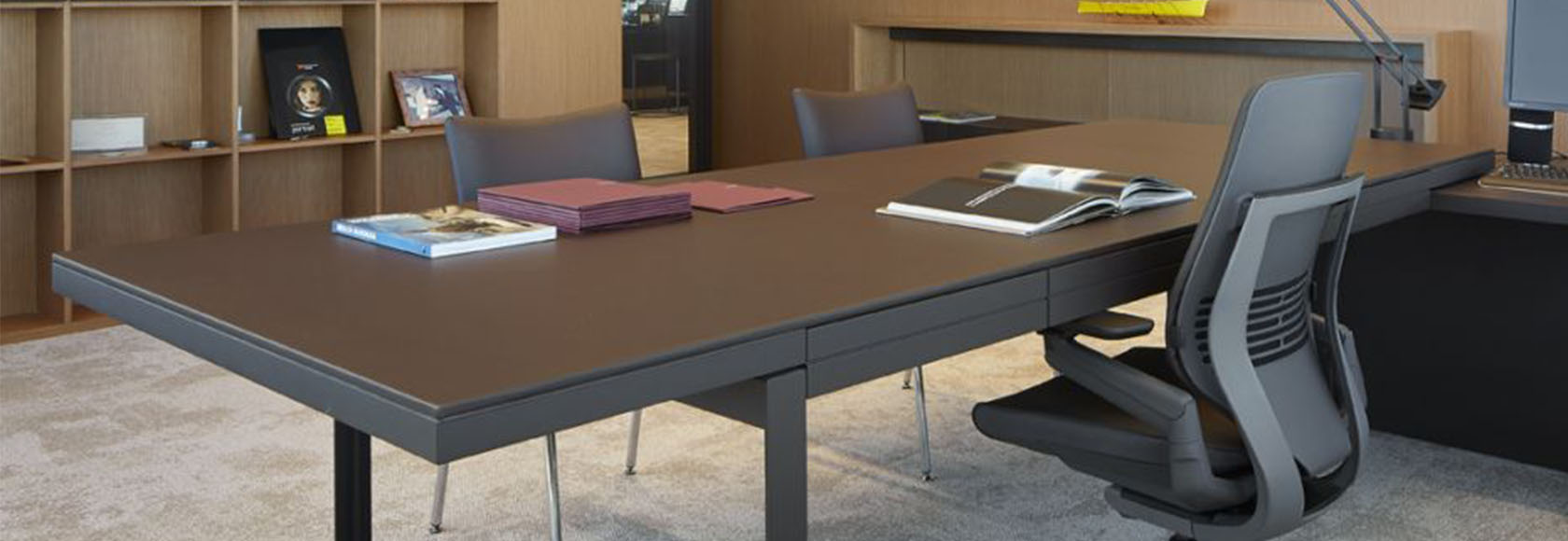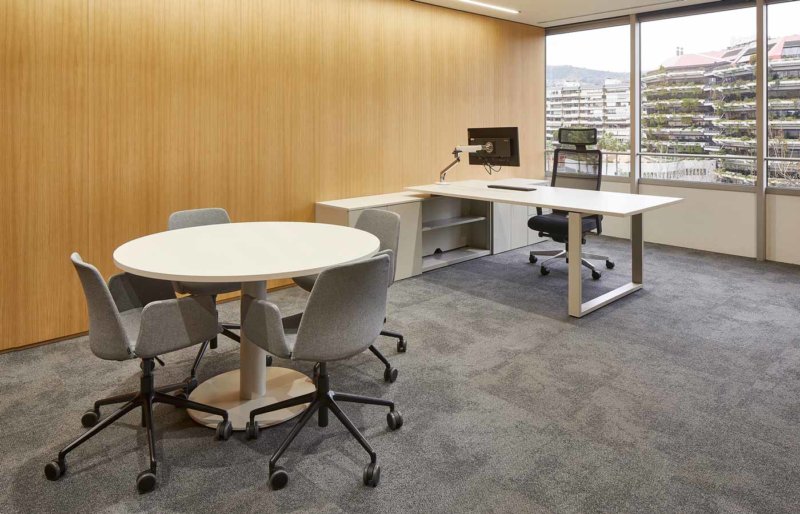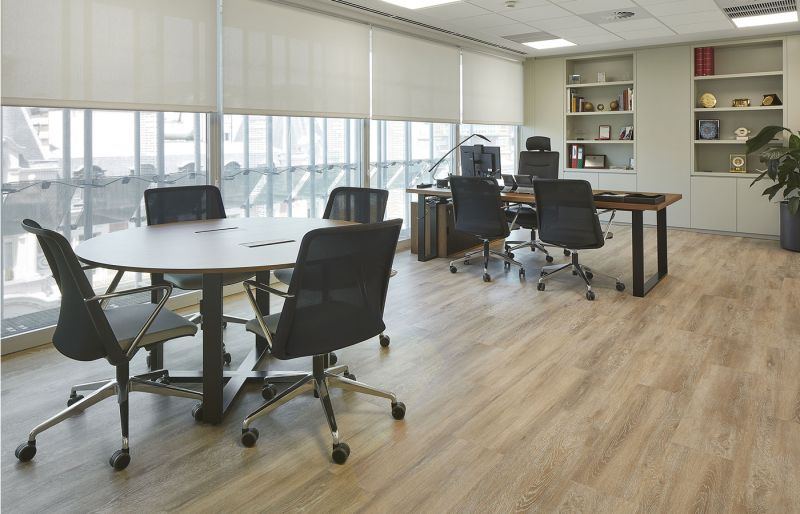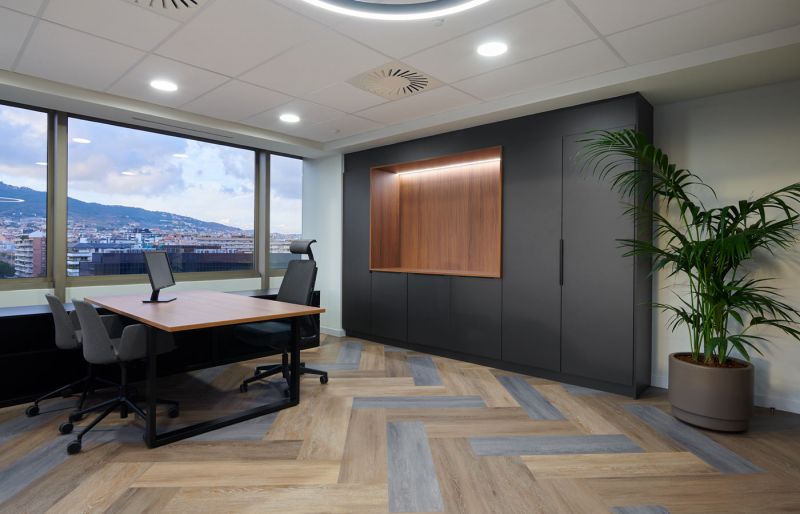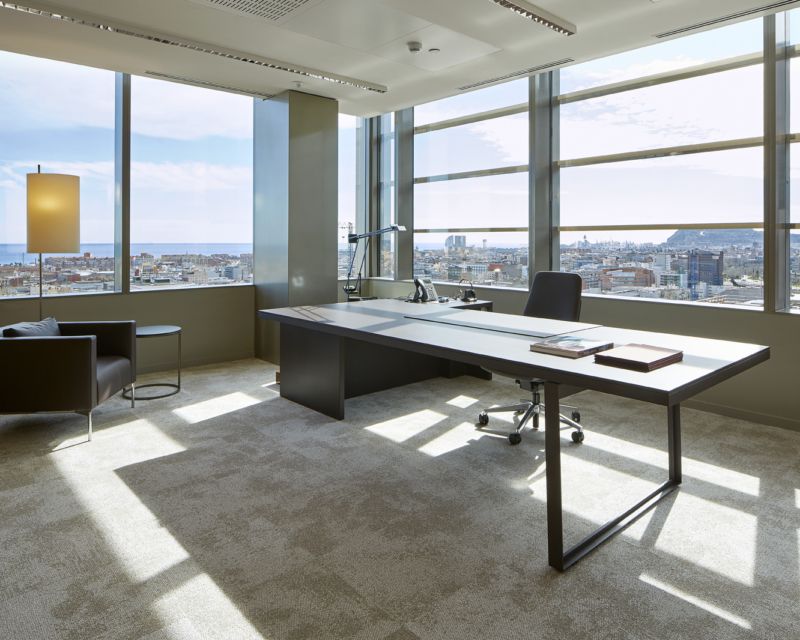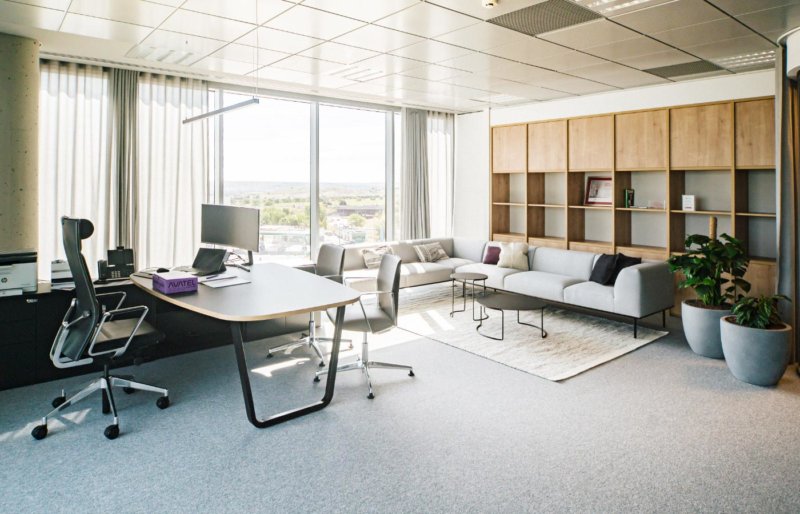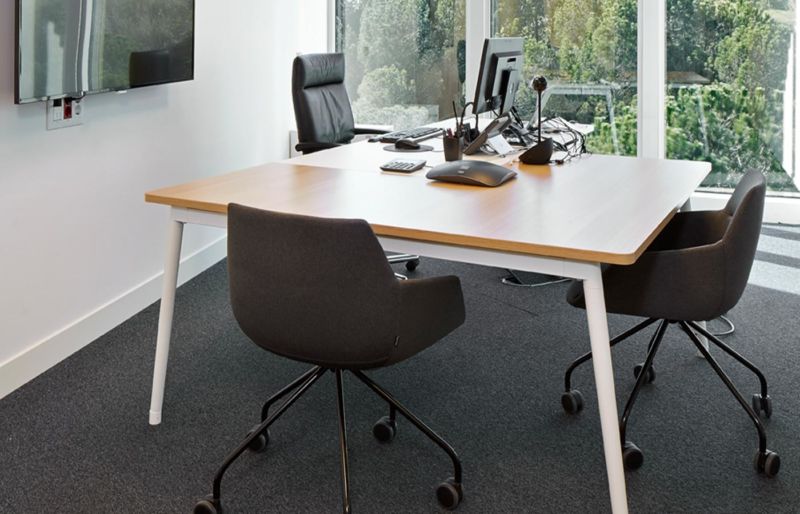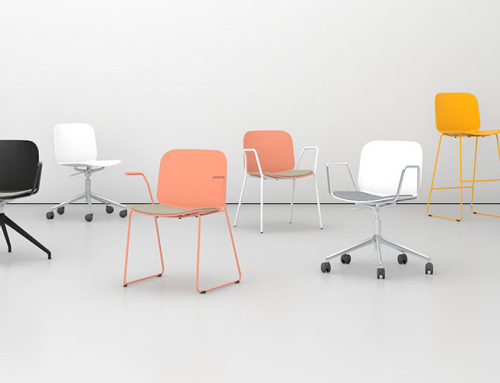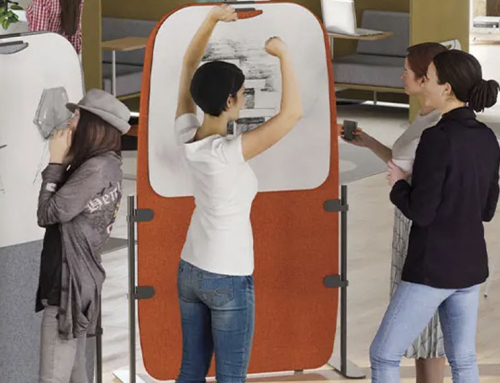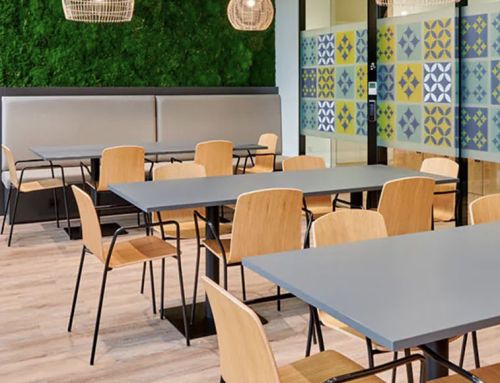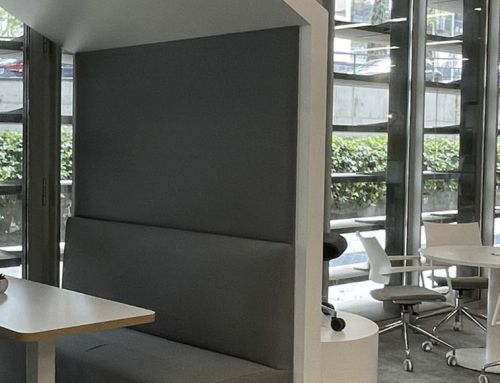Offices, endangered spaces? Even before the pandemic, Ofita’s “More than one” study pointed out that the number of dispatches is drastically decreasing. While at the end of the XX century they occupied 30% of the office; at the beginning of 2000 they only represented 15% of the office, and the trend is that they are disappearing.
With increasing frequency, larger companies are opting for a collaborative office design, without walls or fixed sites, and also without offices for top management. The trend of collaborative spaces is indisputable, due to a question of transparency, both visually and in terms of company culture and communication. The office tends to be more social, with a variety of spaces for different functions.
With the evolution of companies towards more horizontal, flexible and collaborative structures, many have questioned the relevance of offices in modern offices. Instead of having a traditional vertical hierarchy with executives at the top and lower-level workers at the bottom, companies now focus on cross-functional teams working together to achieve common goals.
Fewer offices and new uses
This new structure has a direct impact on office design and especially on offices. The number of offices has decreased significantly. But it also changes their design. The size and location of the space may reflect less the hierarchy of power, as was previously the case, and more the need for privacy and concentration to perform specific tasks.
In many companies, their use is also changing. Instead of having large executive offices, companies can opt for smaller, shared spaces for specific work teams.
However, although their number is decreasing and their design is changing, the truth is that offices are still important in a modern office, especially in some sectors where privacy is crucial, such as the financial sector or law firms, for example. Offices are private workspaces where we can perform our tasks and concentrate without external distractions. They are also places where important meetings are held, with the confidentiality they need, and where crucial decisions are made for the company.
Companies that make a difference
Below, we have selected 6 offices furnished by Ofita, as an example of current trends in the design of this workspace:
The current design of the offices
These 6 examples of current offices show us that their designs focus more than ever on ergonomics and comfort to improve productivity and well-being at work. This is reflected in the lighting, the colors and the selected furniture.
If there are two trends that have been transforming this space in recent years, they are the incorporation of collaborative work areas in the office itself and the choice of furniture with advanced technology to facilitate collaboration between colleagues and between the manager and his team remotely. Future trends in office design also focus on technology and flexibility. In this regard, offices are expected to become increasingly flexible, with multifunctional spaces that can be easily adjusted to suit different tasks and needs. In addition, more collaborative work areas and rest areas are being incorporated to improve work wellbeing.
The furniture used in the offices focuses on ergonomics, as we have mentioned, with chairs and tables that adjust to the individual needs of each worker, and with neutral and soft colors to create a calm and relaxing environment. And, of course, environmentally friendly.
You can see more offices in the Projects area of our website.
